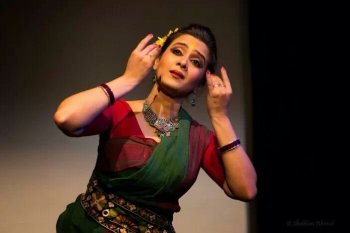
|   |

|   |
Tagore’s Chandalika and its relevance in today’s India - Sulagna Mukhopadhyay e-mail: sulagna64@gmail.com January 28, 2014 When violence and discrimination are constantly on the rise in India despite the dalits becoming aware of their rights as human beings, Tagore addressed this problem of ‘untouchability’ in his much acclaimed dance drama Chandalika. Based on a Buddhist ideology, this fable inspired Tagore to protest against the age-old struggle of the marginalized section of Indian society to attain the status of equality. Ananda, the legendary Buddhist monk, through his preaching of equality arouses the conscience of Prakriti, the pivotal character of the dance drama, who in turn becomes a symbol of revolt against this age-old malady of the Indian society. Chandalika has been performed and staged in many languages with multiple interpretations across the country and overseas. The era in which Tagore conceived this dance drama, India was under the colonial rule, and the urbane educated middle class society restricted their understanding of ‘dance’ with regard to prostitutes, courtesans and village folk. The ‘dancing body’ became a symbol of mobility, resistance and autonomy. On January 16, Shristi Parishad presented Chandalika to the Kolkata audience. It was staged at ICCR. Suchismita Ganguly portrayed Prakriti (the stage name of Chandalika) while Anita Mallick was the mother and Subhasish Dutta depicted the character of Ananda. The curtain rises with Prakriti being shunned again and again by people around her - the flower girls, the milk vendor, the bangle seller. She is verbally humiliated by everyone around and her spirit shatters under the weight of this condemnation. She rails at God, who she worships every day and demands explanation to her humiliation. She sits lost in the deepest despair much to her mother Maya’s exasperation. At this juncture, Ananda appears and asks for water to quench his thirst. Though Prakriti denies at the beginning, the monk’s words work wonders on the ‘untouchable’ Chandal girl’s mind and she suddenly elevates to a moment of recognition. Blindfolded by the awakened consciousness of liberty and overpowered by the freshly sprung need of equality and spiritual union, Prakriti oversteps this morality and ethical boundaries. She pleads to her mother to bring Ananda to her by chanting the fiercest magic spell of ‘Nagpash Mantra.’ In the penultimate scene she realizes her guilt at making a person suffer against his wishes.  Suchismita Ganguly as Prakriti The colour of the costumes were appropriate as Prakriti wore a green saree, the symbol of nature, her mother’s costume was red and black, a symbol of tantra, and Ananda’s costume was saffron in colour, depicting the sacrificing life of a monk. The group choreography by Anita Mallick needs mention as there was not a moment of boredom and repetition. The dancers captured every emotion of the story with their facial expressions, hand gestures and footwork. The scene in which the mother-daughter duo tried to bring Ananda back to Prakriti through witchcraft, received much applause from the audience. Dutta as Ananda was good. Though Suchismita efficiently showcased the central character, there were certain moments when one expected more intense expressions from a competent dancer like her. Sulagna Mukhopadhyay was trained in Bharatanatyam by Guru Thankamani Kutty and Indian folk by Late Botu Pal. She has an M.A. in Comparative Literature and has freelanced for various leading newspapers of Kolkata like The Telegraph, The Statesman and Ananda Bazar Patrika. She has written articles on dance and gender issues. She is a teacher of South Point School since 1996. |